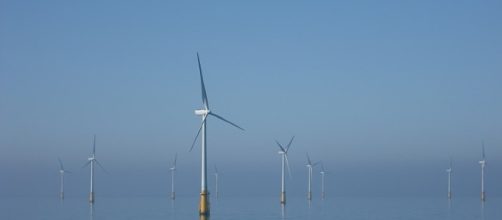Fascinating research is opening an eye on the future of the planet. Recently, scientists from the Carnegie Institution for Science published their findings on the possibility of ocean-based Wind Farms through the Proceedings of the National Academy of Sciences.
Anna Possner and Ken Caldeira created meticulous models to estimate the potential energy that could be generated by ocean-based wind farms. Although they might be feasible, it was found that seasonal fluctuations could vary greatly. While in summer, the North Atlantic could potentially generate enough energy to power Europe or the entire United States, in winter, such wind farms could generate enough power to supply energy that could meet the demands of the whole world.
Ocean wind farms need to be huge
The study concluded that for this amount of power to be generated, wind turbines would need to be spread out over 3 million sq. km, (1.86 million square miles).
The theory was based on the hypothesis that wind speed over the ocean would be higher than those over land. The reported stated that "wind turbines in the open ocean could in theory intercept more than five times as much energy as wind turbines over land."
What needed to be studied was whether higher wind speeds could actually convert to more energy being generated. Caldeira asked whether the winds (were) faster as out at sea there are no structures slow them down. Even then, could the turbines themselves slow down the windspeeds and reduce it to that of land-based energy turbines?
Wind farms at sea convert more energy
The land-based wind farms that most people are familiar with work by capturing the energy in the wind that originates from high up in the atmosphere. Once the energy reaches land, turbines can extract the energy. In the past scientists believed that there is a maximum amount of energy that can be extracted, as energy "is limited by the rate at which energy is moved down from faster, higher up winds," FutureTimeline noted.
Caldeira asked whether the ocean could move more energy downwards than the landbased atmosphere could?
The answer seems to be a "yes." Possner and Caldeira worked with their models to compare Kansas-based wind farms with a theoretical ocean-based farm. Their findings indicate that indeed, as much as three times the amount of energy might be possibly generated on the open ocean than those on land.
Possner explained that they discovered that huge ocean-based wind farms could "tap the energy of the winds throughout much of the atmosphere." They also said that the wind farms onshore are held back through the lack of surface winds
This does not mean that the ocean will suddenly bloom with these farms. The technology for deep water ocean farms is trailing research at the moment and developers still need to figure out ways to transmit the generated energy to the land. There are existing wind farms in the sea, including one at Barrow Offshore Wind Limited, in Ireland. However, any North Atlantic development would be very much bigger.

